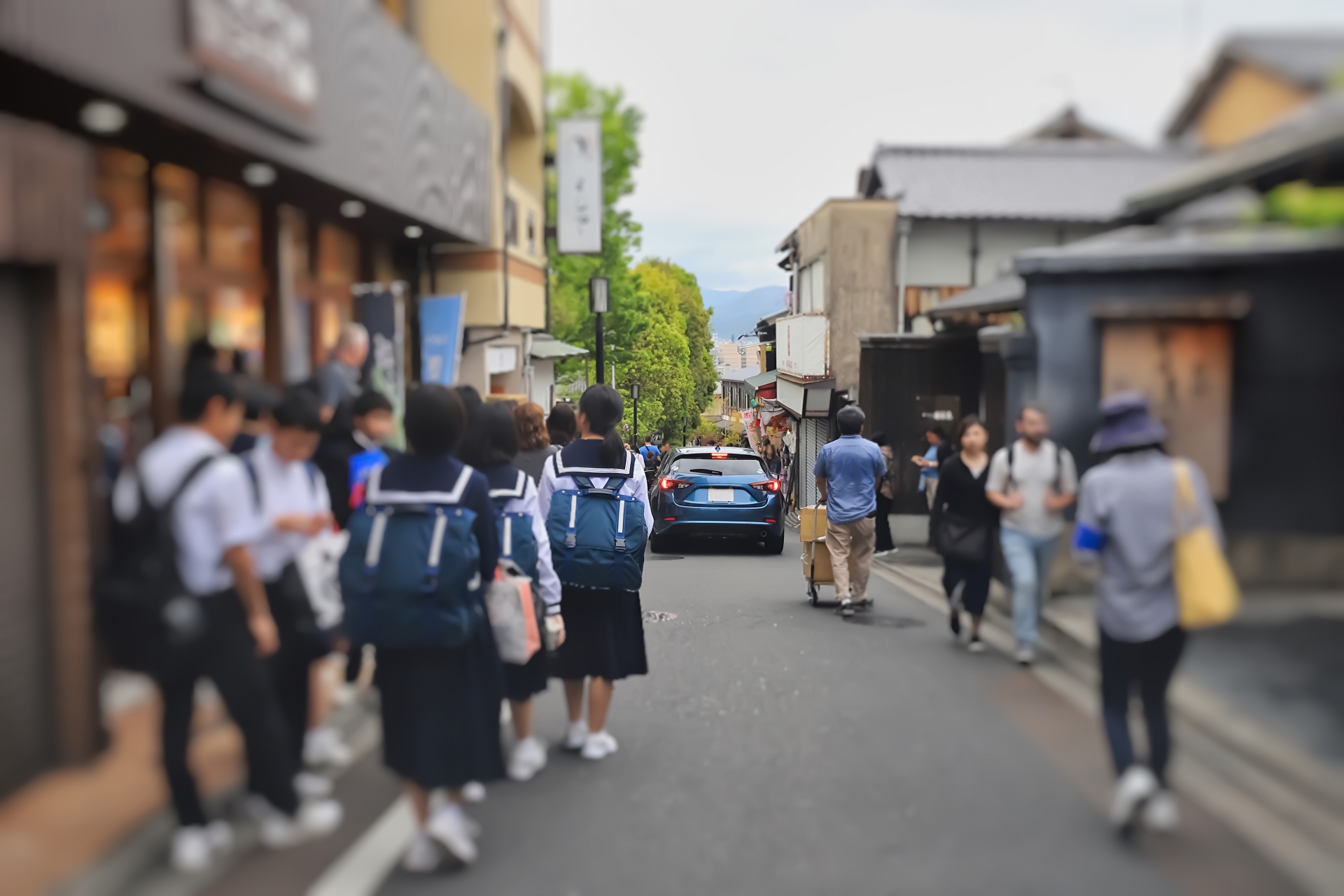The annual invasion: Students and the spring ritual
I am 100% certain that the biggest school event for Japanese students is the School Trip (Shūgaku Ryokō). We typically go on a trip with our classmates three times in our academic lives: in elementary school (6th grade), junior high (3rd grade), and high school (2nd grade). It’s a kind of Japanese spring tradition, which is why you see hordes of students in school uniforms at popular sightseeing spots like Kyoto.
It is, perhaps, a tragedy if you end up staying in the same hotel as one of these school groups. Having said that, none of us (who once enjoyed these loud, chaotic trips) have the right to complain when we recall our own youthful exuberance. (My sincere apologies to all the non-Japanese tourists caught in this annual invasion.) I do, however, feel genuine sorrow for the current school kids whose trips were largely canceled due to the COVID pandemic.
The boredom of history: High school students in Kyoto
The most popular destination for high school trips from Hokkaido is usually Kyoto and Nara—the ancient capitals. To be honest, I was incredibly bored during my trip. It requires maturity and perspective for high school students, myself included, to truly appreciate the value of old temples and shrines.
For people coming from outside Japan, Kyoto is undoubtedly the best place to touch the core essence of Japanese culture and tradition. For most Japanese people, however, it may simply be the place where they go to retrieve the distant memory of their chaotic school days. I guess this duality—cultural icon and personal memory marker—is why Kyoto is perennially packed.
The unbelievable law: Wood vs. Wisdom
Now, let’s talk about a curious paradox. In my ongoing study of the property leasing business, I learned that a key factor in asset management and tax saving is the legal durable life of a property.
Can you believe this? The legal durable life of a wooden building in Japan is stated to be only 22 years.
This fact is genuinely absurd when you consider that Hōryū-ji Temple in Nara, one of the oldest wooden structures in the world, was built about 1,400 years ago and still stands without major reconstruction. This suggests that, according to Japanese tax law, the greatest wooden masterpiece in the world expired sometime around the year 694 AD.
The ancient secret: Flexibility over rigidity
Japan, with its frequent earthquakes and climate of high temperature and humidity, presents a harsh environment for any building material. The secret behind Hōryū-ji’s longevity lies in its structure’s ability to utilize the flexibility of wood.
The main frame was assembled without nails to allow the structure to absorb the shakes of earthquakes and accommodate the natural expansion and contraction of the wood caused by changes in temperature and humidity. Rigidity fails; flexibility endures.
This wisdom of our ancestors in woodworking is passed directly onto our products. Our IPPONGI table is a perfect example. The tabletop is made from two planks set slightly apart to absorb expansion and contraction. Crucially, the anti-warping beam on the back is not fixed but movable in a tapered groove, allowing users to adjust it according to the tabletop’s condition.
Why don’t you get a table that carries the history and wisdom of a 1,400-year-old masterpiece?

Shungo Ijima
He is travelling around the world. His passion is to explain Japan to the world, from the unique viewpoint accumulated through his career: overseas posting, MBA holder, former official of the Ministry of Finance.

